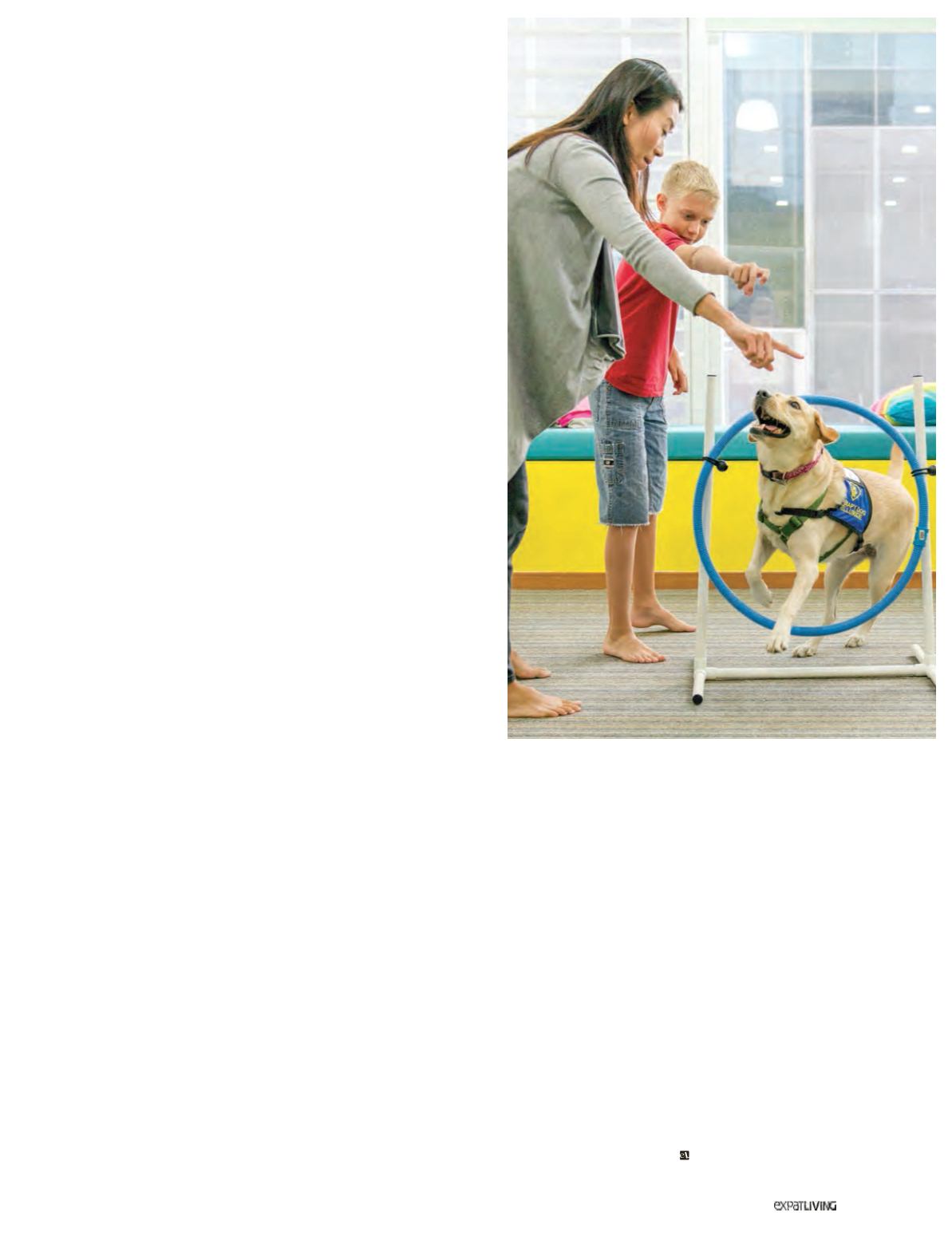

MENTAL HEALTH
261
June15
MAUREEN HUANG, who has a master’s degree
in social work from the University of Denver, is the
founder and executive director of
Pawsibility
, an
animal-assisted counselling and socio-emotional
development programme.
Tell us about your “co-therapist”, Telly.
Telly is a three-year-old Labrador retriever mix.
What are the benefits of Animal Assisted Therapy
(AAT)?
Having a friendly therapy dog in the counselling room
motivates youngsters to come for sessions and to open up
and talk. The presence of the therapy dog has been shown to
calm people down: it brings down heart rate, blood pressure
and the stress hormone cortisol, while raising levels of the
hormone oxytocin, which is associated with positive social
interaction. I have found that in interacting and working with
dogs, children learn to be kind, patient, compassionate and
empathetic.
How does an AAT session play out?
I often combine AAT with traditional evidence-based
intervention techniques such as cognitive behavioural
therapy or solution-focused therapy. While I am facilitating a
conversation with the child, Telly engages them and provides
them with silent support and unconditional love. Often, they
will be patting Telly or tossing a ball for her to fetch while they
tell her how they are feeling. Sometimes, we play games or do
activities that teach the child or teen social-emotional skills.
What kinds of psychological issues can be
addressed in this way?
We have had good success in addressing all sorts of
issues, from anger management, anxiety and stress, abuse
and trauma, behavioural issues and bullying to dealing
with disabilities or special needs such as autism spectrum
disorder, ADHD and so on. It can also be of help in cases of
depression, grief, loss and parental divorce; and with issues
of self-esteem, relationships and social or school problems.
Can you give us an example?
I worked with a 14-year-old girl from the UK, who struggled
with anger management issues. Her short temper affected
the way she interacted with her peers. She absolutely loved
Telly, however, and treated her kindly. I got her to do some
Pawsibility Animal Assisted Therapy
#08-14 The Central
6 Eu Tong Sen Street
6225 7195 |
pawsibility.comANIMAL
ASSISTED THERAPY
positive reinforcement dog training with Telly, which models
how to treat others with kindness and respect. Dog training
can be a real test of patience, and it was a great opportunity
for her to work on managing frustrations, building patience
and developing empathy. In time, she was able to apply
those newfound skills to her interactions with her peers in
everyday life.
We have also worked with quite a number of expat children
and teens who found the move to Singapore difficult. As you’d
expect, those who could not bring their dogs with them seem
particularly drawn to Telly. They find they’re able to identify with
Telly, who had to leave Colorado to come with me to Singapore
18 months ago. Her story resonates with them and they feel
that she understands what they are going through. When I
ask them to come up with ways that Telly can make friends
here, it helps them to figure out how they can do the same
for themselves. The kids think, “If Telly can do it, so can I.”



















